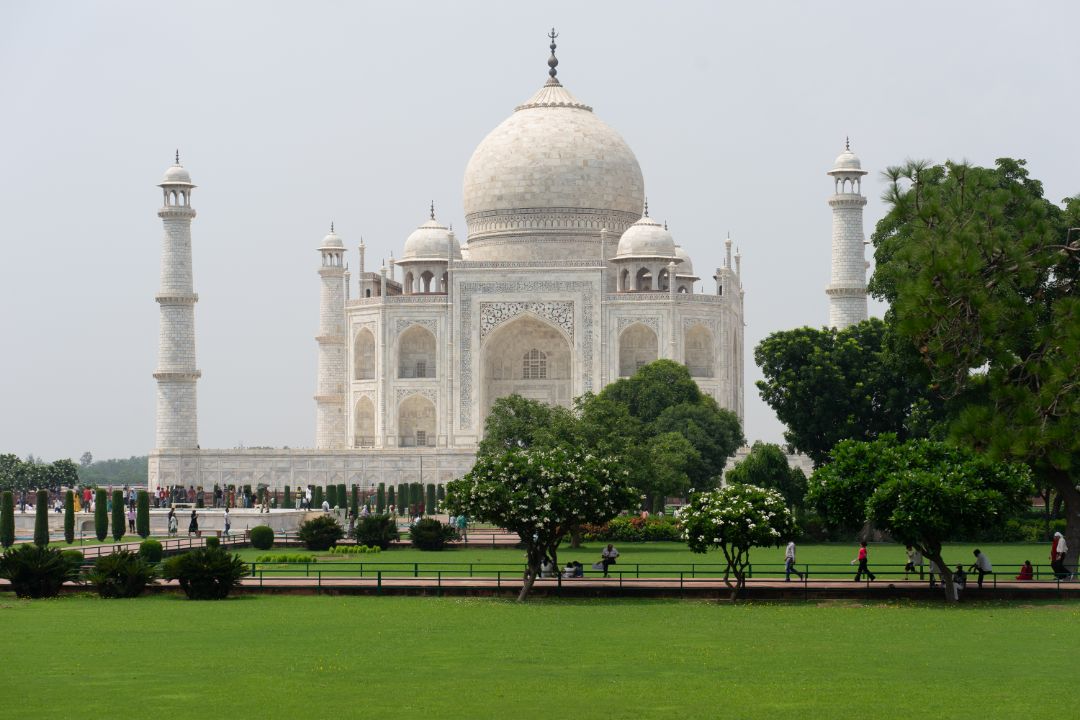The Timeless Love Story Behind the Taj Mahal
19 Sep,2024

The Everlasting Love Tale of the Taj Mahal
One word frequently springs to mind when contemplating the Taj Mahal: love. More than just a magnificent architectural marvel, the well-known marble mausoleum in Agra, India, represents an enduring love tale that has warmed people's hearts for generations. The monument honors the love that existed between Mumtaz Mahal, the Mughal emperor, and her husband Shah Jahan. Let's explore the tragic and wonderful story behind one of the most well-known landmarks in the world.
The Story of Mumtaz Mahal and Shah Jahan
The Mughal dynasty's prince Shah Jahan was a man of great strength and influence. But like every great love tale, Mumtaz Mahal, a lady, won his heart rather than his country. Mumtaz Mahal, whose birth name was Arjumand Banu Begum, was barely a teenager when she first encountered Shah Jahan, who was then known as Prince Khurram, at the age of 14. One of the greatest architectural achievements in human history was allegedly inspired by this ardent love, which was supposed to have happened at first sight.
The Unexpected Demise of Mumtaz Mahal
There was a disaster in 1631. As their fourteenth kid was born, Mumtaz Mahal passed away. The defeat upset Shah Jahan. He supposedly abandoned his royal duties and sequestered himself for a long time due to his overwhelming sadness. According to legend, his hair nearly instantly turned white with sorrow. However, Mumtaz did not pass away with Shah Jahan's affection for her. Rather than letting his grief get in the way, he used it to create a monument that will always remember their love.
Mumtaz Mahal: The Empress Who Created the Monument
Mumtaz Mahal was not merely the emperor's preferred spouse. She was the love of his life, his confidante, and his advisor. She was born into aristocratic Persian family and wed Shah Jahan in 1612. Their strong bond was based on steadfast loyalty, intense affection, and respect for one another. Mumtaz was an important member of Shah Jahan's court, and their relationship only got closer with time.
Constructing the Taj Mahal
A year after Mumtaz's passing, in 1632, work on the Taj Mahal started. Shah Jahan had a unique idea for a mausoleum that would represent the enduring quality of his love for her. To realize this idea, about 20,000 artists and laborers were engaged. After more than 20 years of work, the structure was eventually finished in 1653. Constructed from shimmering white marble and with elaborate inlays of priceless stones, the Taj Mahal is considered an architectural masterpiece.
Significance of the Taj Mahal
The Taj Mahal is fundamentally a symbol of unending love. Its exquisite symmetry, the image's reflection in the Yamuna River, and its ethereal beauty all serve as symbols for the relationship between life and death and the divine and the mortal. The tall central dome of the Taj represents heaven, and the gardens and minarets around it reflect the splendor of paradise as it is traditionally imagined in Islamic thought.
The Masterpiece's Architects and Artisans
The Taj Mahal was made possible by the talent of innumerable masons, architects, and craftspeople, even though Shah Jahan had the original idea. Although renowned craftsmen from all throughout the empire contributed to the project, Ustad Ahmad Lahauri is frequently given credit as the main architect. They employed cutting-edge methods at the time, such as intricate marble calligraphy and semi-precious stone inlays.
Visitation to the Taj Mahal
Millions of visitors visit the Taj Mahal each year, captivated by its history and beauty. Sunrise or sunset are the ideal times to visit because of the monument's ethereal aspect, which is created by the soft light reflecting off the white marble.
Teachings from the Monument
Love is immortal and unaffected by time, power, or death, as the Taj Mahal reminds us. It serves as a reminder of both the fleeting nature of life and the value of savoring the time spent with those we love.
In summary
In addition to being a magnificent architectural marvel, the Taj Mahal has always been a representation of love. It is a reminder of the eternal power of love and a monument to Shah Jahan's devotion to Mumtaz Mahal.






